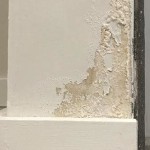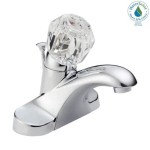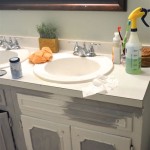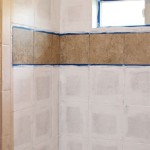How To Remove and Retile a Bathroom Floor
Replacing a bathroom floor can significantly enhance the aesthetic appeal and functionality of the space. Undertaking this project requires careful planning, appropriate tools, and a systematic approach to ensure a professional and long-lasting result. This article provides a step-by-step guide on how to remove existing tiles and install new ones, focusing on best practices and essential considerations for successful bathroom floor retiling.
Preparation and Safety Measures
Prior to commencing any demolition or construction, thorough preparation is crucial. The initial step involves gathering all necessary tools and materials. This may include a tile scorer, grout removal tool, hammer, chisel, pry bar, safety glasses, work gloves, dust mask, thin-set mortar, new tiles, trowel, grout, grout sponge, buckets, a level, spacers, and a wet saw (or tile cutter).
Safety should be a primary concern throughout the entire process. Wearing safety glasses is imperative to protect the eyes from flying debris during tile removal. Work gloves protect the hands from sharp edges and potential injuries. Employing a dust mask is essential to prevent the inhalation of dust and particles, particularly when removing old grout and tile materials. Proper ventilation of the bathroom is also recommended to minimize dust exposure.
Before any demolition work begins, it is crucial to shut off the water supply to the toilet and any other fixtures connected to the floor. This prevents potential water damage during the removal process. The toilet should be disconnected and removed, along with any vanities or other obstructions in the work area. This provides unobstructed access to the entire floor surface.
Protecting adjacent surfaces is also vital. Cover the bathtub, shower stall, and walls with plastic sheeting or drop cloths to shield them from debris and potential damage. Secure the protective coverings with painter's tape to ensure they stay in place throughout the project.
Tile Removal Process
The process of removing existing tiles can be labor-intensive, but careful execution minimizes damage to the subfloor. The initial step involves removing grout from around the tiles. This can be achieved using a grout removal tool, which can be manual or electric. Electric grout removal tools expedite the process, but caution is necessary to avoid damaging the surrounding tiles.
Once the grout is removed, attempt to pry up the tiles individually. Using a hammer and chisel, carefully tap the chisel underneath the edge of a tile. Apply gentle pressure to lift the tile. If the tile is resistant, try working around the edges to loosen it gradually. A pry bar can be used for stubborn tiles, but it is important to use caution to avoid damaging the subfloor.
If the tiles are firmly bonded to the subfloor, scoring the tiles with a tile scorer can facilitate removal. Score the tile in a grid pattern and then attempt to chisel it up. This weakens the tile and makes it easier to break into smaller, manageable pieces.
After all the tiles have been removed, the next step is to remove any remaining thin-set mortar from the subfloor. Use a scraper or a chisel to remove the mortar. For stubborn areas, a floor scraper with a long handle can be helpful. Ensure the subfloor is clean, level, and free of debris before proceeding to the next phase.
Inspect the subfloor for any signs of damage, such as cracks, rot, or unevenness. Repair any necessary repairs to ensure a solid foundation for the new tiles. If the subfloor is severely damaged, replacement may be required.
Subfloor Preparation and Layout
A properly prepared subfloor is essential for a successful tiling project. The subfloor must be clean, dry, and level. Any imperfections can lead to cracked tiles or uneven surfaces. If the subfloor is concrete, it may need to be cleaned and leveled with a self-leveling compound. This creates a smooth and even surface for tile adhesion.
If the subfloor is wood, ensure it is structurally sound and free from rot. Replace any damaged sections. It may be necessary to install a layer of cement backer board over the wood subfloor. Cement backer board provides a stable and water-resistant surface for tile installation. Secure the backer board with screws or nails, following the manufacturer's instructions.
Before applying any mortar or adhesive, conduct a dry layout of the tiles. This allows for visualization of the final pattern and ensures proper spacing. Start by finding the center point of the room and laying out the tiles from the center outwards. Use tile spacers to maintain consistent grout lines. Adjust the layout as needed to avoid narrow cuts along the walls or around obstacles. It is preferable to have equally sized cuts on opposite sides of the room.
During the dry layout, take note of any areas that require special cuts, such as around pipes, corners, or doorways. Mark these areas on the tiles with a pencil. Use a wet saw or tile cutter to make the necessary cuts before applying the mortar.
Tile Installation and Grouting
With the subfloor prepared and the layout finalized, the tile installation process can begin. Mix the thin-set mortar according to the manufacturer's instructions. Use a notched trowel to apply the mortar to the subfloor, working in small sections at a time. The size of the trowel notch should be appropriate for the size of the tiles being installed.
Press each tile firmly into the mortar, using a slight twisting motion to ensure proper adhesion. Use tile spacers to maintain consistent grout lines between the tiles. Periodically check the level of the tiles using a level to ensure a flat and even surface. Adjust the tiles as needed while the mortar is still wet.
Continue laying tiles, working outwards from the center of the room. Be sure to cut the tiles as needed to fit around obstacles and along the walls. Allow the mortar to dry completely, according to the manufacturer's instructions, before proceeding to the grouting phase.
Once the mortar is fully cured, remove the tile spacers and prepare the grout. Mix the grout according to the manufacturer's instructions. Apply the grout to the tile surface, using a grout float to force the grout into the grout lines. Work diagonally across the tiles to ensure complete coverage.
After the grout has been applied, remove excess grout from the tile surface with a damp sponge. Rinse the sponge frequently to avoid leaving a haze on the tiles. Allow the grout to dry slightly, according to the manufacturer's instructions, and then polish the tiles with a clean, dry cloth. Apply a grout sealer to protect the grout from stains and moisture. This should be done after the grout has fully cured, which can take several days.

How To Remove A Tile Floor

Removing Ceramic Tile How To Remove Floor

How To Retile A Shower Floor Art Tile Renovation

How To Remove Bathroom Tile Steps Prep Considerations

How To Remove A Tile Floor

How To Remove Replace One Bathroom Tile Ceramic Repair

How To Retile A Shower Floor Art Tile Renovation

Remove Bathroom Tile How To Your

How To Remove Tile Flooring Yourself With Tips And Tricks Removal Ceramic Floor

How To Renovate Bathroom Without Removing Tiles Multipanel
Related Posts







